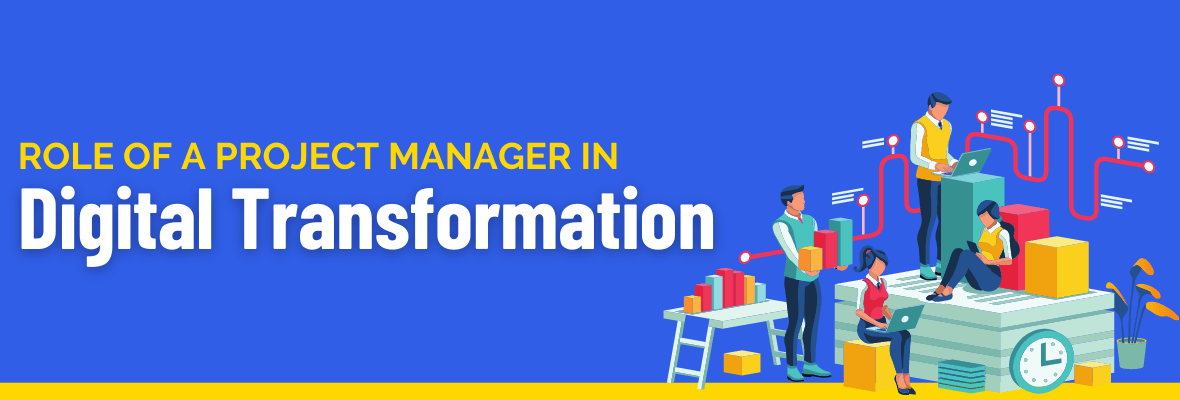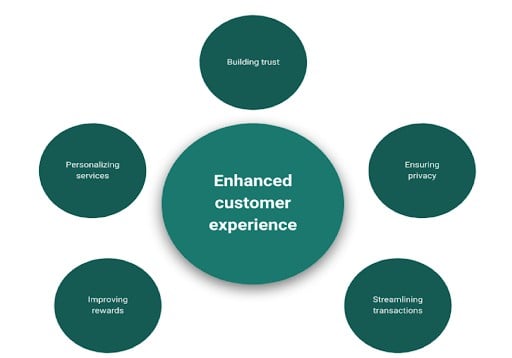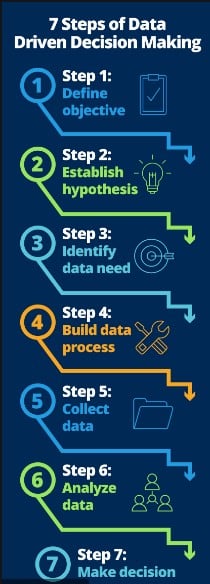Role of A Project Manager in Digital Transformation
Going digital has become an ersatz for businesses striving for growth. In fact, digital transformation is undoubtedly the order of the day. But, what does it take for project management leaders to ace digitalization in a rapidly changing environment? As project managers pivot from their traditional role, they need a clear roadmap to expedite the digital initiative at their organizations. In this article, you'll get to know more about the capabilities that project managers need today to bring digital transformation vision into reality.
So, first things first - why is digital transformation important?
The Netflix Story
When Reed Hastings founded this company in 1997, it used to rent DVDs and courier the same to customers. Business was good, although the competition was stiff as well.
In 2007, this company started its online streaming service which gradually found favor as the new way of absorbing content through the digital medium. In the second quarter of 2020, this organization clocked total revenues of over 6.14 billion US Dollars, a 25% jump from the same quarter in 2019. The company’s annual revenue for 2019 was 20.15 billion US Dollars. Bearing in mind, the same company clocked a little more than 1.5 Billion whole years for 2011, this is exponential growth by any standards.
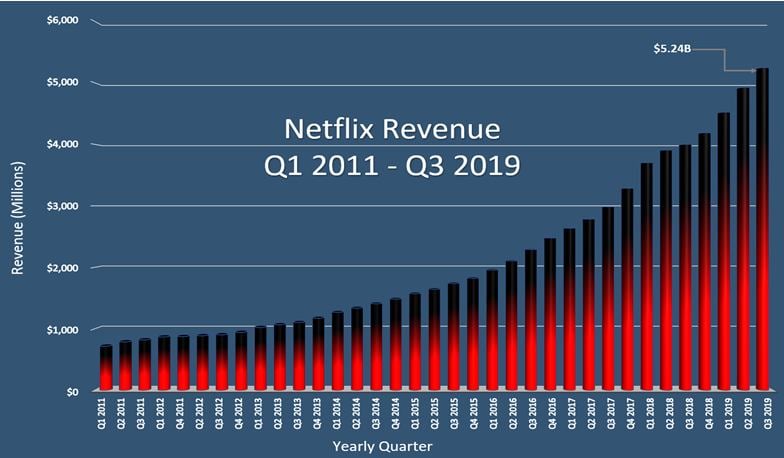
Source: reddit.com
With more than 180 million-plus subscribers presently, Netflix has redefined the way people view digital content. That the Covid-19 pandemic and the resultant lockdowns have compelled many more people to subscribe to apps like Netflix, the fact still remains that we are talking about a hugely successful brand.
What are the reasons for the success of this brand? From a DVD rental company to a Digital streaming behemoth, the company’s success can be credited to the following factors-
- Scalability
- Leadership Dynamism and Agility
- Understanding Customer needs
- Leveraging and Building Digital Capabilities
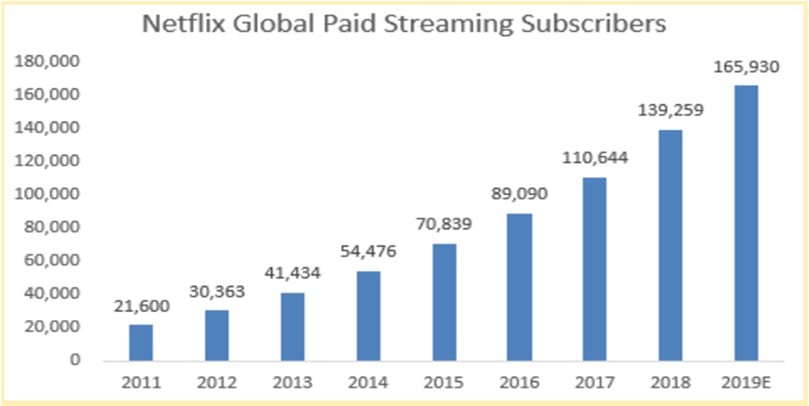
Source: nasdaq.com
As a consumer, you get the opportunity to define the viewing experience and the content that you get to view is by far premium to what is flashed on cable TV. So, how is Netflix able to consistently understand the pulse of its consumers and ensure that they continue to get a superlative experience?
The key is an absolute understanding of what the consumer needs and ensures the content is of the highest quality. That defines the mindset of company leadership.
The aspect that is helping them over-achieve their goals consistently and scale-up aggressively is their ability to transform their businesses through Digital Transformation.
With various examples from the Industrial revolution age to the Services boom, moving onto the Information Technology age, organizations that have been intentional about Digital Transformation to drive Customer Excellence, have continued to thrive despite changing market and macro-economic conditions.
What are the Advantages of Digital Transformation?
With the adverse impact that the Covid-19 pandemic has had on businesses, there are organizations that are either-
- Fighting for survival
- Thriving, or
- Perishing
There are some segments of businesses that seem to be playing the “waiting game”. This segment believes the “vaccine” might be a panacea to all their woes including business. However, what this segment is failing to recognize is the fact that business is not going to come back to the earlier state anytime soon. And, by the time markets and consumers behave the way they “normally” did, the way they buy the products and solutions will change.
On the other hand, the ones that are “Thriving” have the advantage of being in the right place at the right time. They patiently built a model with 'digital' at the centre of the strategy and they are the ones making the most in the current environment. Think of the Amazons, Flipkarts, and some start-up to unicorn stories within the edtech sector, and you will realize that they have made the most of the current pandemic in terms of scaling up capabilities and expanding at a phenomenal pace.
The segment that possibly has been hit due to this pandemic, majorly because of their brick and mortar model, have still not lost hope. It is impressive to hear that Mercedes now sells the majority of its cars in India online. Retail is now focusing on online and there are stories of construction and real estate learning to interact with customers using Digital capabilities and mediums as well.
Irrespective of which sector or demography your organization operates in, there are distinct benefits for those who embark on the journey of Digital Transformation.
1) Enhanced Customer Experience
If you wish to buy a pair of spectacles for your child, but do not wish to go the errand of visiting the shop during the weekend leisure time, you always have the choice of downloading an app on your Smartphone, check which frameworks best for your child using 3D imaging available on the app and order for the same from the convenience of my home. In case, you have concerns about the quality of the product, you retain the option of returning the same.
When you log in to an e-commerce site to buy my grocery, apparel, or accessories, you also realize that as a consumer the price at which you buy the same is far more competitive than visiting a brick-and-mortar store.
Digital Transformation has the capability to not only connect more seamlessly to customers, but it empowers customers to make their own choices.
It ensures that through customer insights and a user-friendly interface, the customer is truly treated like a “King”. The customer has the option to choose what and how much they wish to buy.
As the value chain from input to customer output is streamlined, efficient, and robust, customers can rest assured that the quality of the goods delivered to them are of the expected quality standards.
Digital Transformation looks at business processes from an outside-in perspective (customer perspective) and works on re-connecting the value chain to truly define and deliver what customer demands, thereby truly driving superlative Customer Experience consistently.
2) Increased Customer Reach
The India Retail story has continued to be strong over the last decade. Part of the decrease in the gap between urban and rural consumer share in Retail can be attributed to brands being able to market to a wider audience. The exponential increase in mobile and internet penetration in rural areas has obviously aided this trend.
With covid-19, although this sector has been hit badly, we can see an evident comeback as customers have changed the way they buy apparel and accessories. With the use of Augmented Reality and Virtual Reality, the store has now reached the customer screens.
Digital transformation not only enables wider penetration for the organization but also breaks the boundaries of geography and culture.
For companies that are looking to expand, defining a target market, and driving a digital strategy to position how their products/solutions can cater to the needs of the market, gives rise to newer opportunities that were earlier untapped.
With a larger footprint, there are obvious demands on customer satisfaction and therefore need for alignment of business processes to deliver value consistently.
3) Data-driven Decisions
What are the factors impacting revenue growth? Why are there delays in customer deliveries? How much downtime are we experiencing and what is the corresponding impact on production?
These are decisions constantly coming up in Business Review meetings.
Digital Transformation provides timely and accurate insights into customer behaviour, production/operational inefficiencies and can also feed into improving processes and people consistently.
Analytics-driven customer insights help organizations pre-empt customer needs and ensure the right first time deliveries when the moment of truth arrives.
Review meetings become crisper, leadership decision-making sharpens, and focus shifts towards “what if” questions than “why” questions.
This further improves leadership focus on strategy leaving the execution to their teams.
4) Cost Efficiencies
In the current scenario, where top-lines are stretched due to external and internal factors, generating cost efficiencies seems a no-brainer.
Well, the perspective here is to look at efficiencies as an outcome of getting smarter in the way companies deliver the outcomes to their customers.
Digital Transformation plays a pivotal role in this space. As organizations look to build efficiencies in their value chain, CXOs and their Leadership teams are distraught with prioritizing investments for Business Transformation Initiatives or Revamping their current strategies.
The answer in most instances would be – both!
At a time when consumer behaviours are changing, market trends are becoming increasingly unpredictable and change is the only constant, it is imperative for organizations to get smarter in the way they deliver value.
Digital transformation enables a review of the business processes that generate value for the customers, simplify processes, eliminate unwanted effort, and builds renewed capability to deliver value at less cost, better quality, and within timelines.
Indirectly, this benefits the Human Capital development within the organization as well, since a digitally transformed environment will enable people to upskill themselves and perform more value-added tasks.
Motivation, efficiency, and effectiveness improves as people understand that their organization is more attuned to market realities and is constantly building an operating model that is future-proof, and at the same time, nimble.
5) Improved Bottom Line
Who doesn’t like to be associated with a profitable company! Customers, investors, employees, and every person in the value chain know they are in safe hands if their organization continues to generate profits.
After all, profits are the reason why businesses exist. It gives the organization opportunities to invest in the furtherance of its growth strategies and set the stage for future growth.
Digital Transformation’s dual focus and impact on both top-line and cost efficiencies ensure that enough and more opportunities are created for the organization to aggressively get into uncharted territory in line with their strategy.
In a nutshell
As a consumer, you define the way you wish to consume or buy a particular product or service. As a customer, you would like outcomes to be delivered consistently at high quality, lesser cost, and within timelines. As an investor, your focus is ensuring that your resources generate returns thereby achieving your goals. As a company, you would strive towards achieving customer outcomes and run a profitable business.
Whatever your role and endeavour, Digital Transformation builds capability, predictability, discipline, and rhythm in the way you operate our endeavours. In a VUCA world, ensuring talent is identified and nurtured continuously coupled with leveraging Digital capabilities are key for organizations to survive and thrive!
Are you a practicing project management professional? Consider getting certified today!
